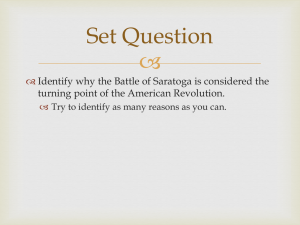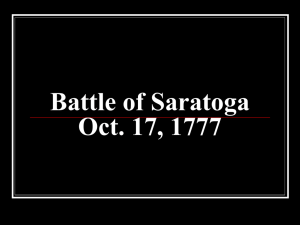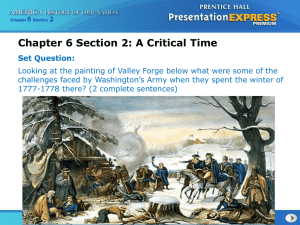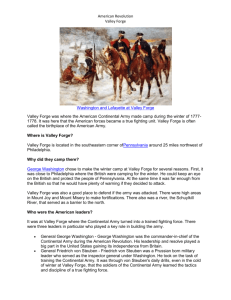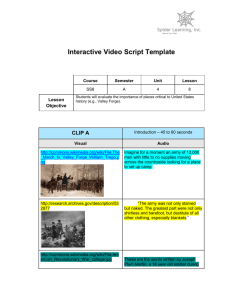Valley Forge
advertisement
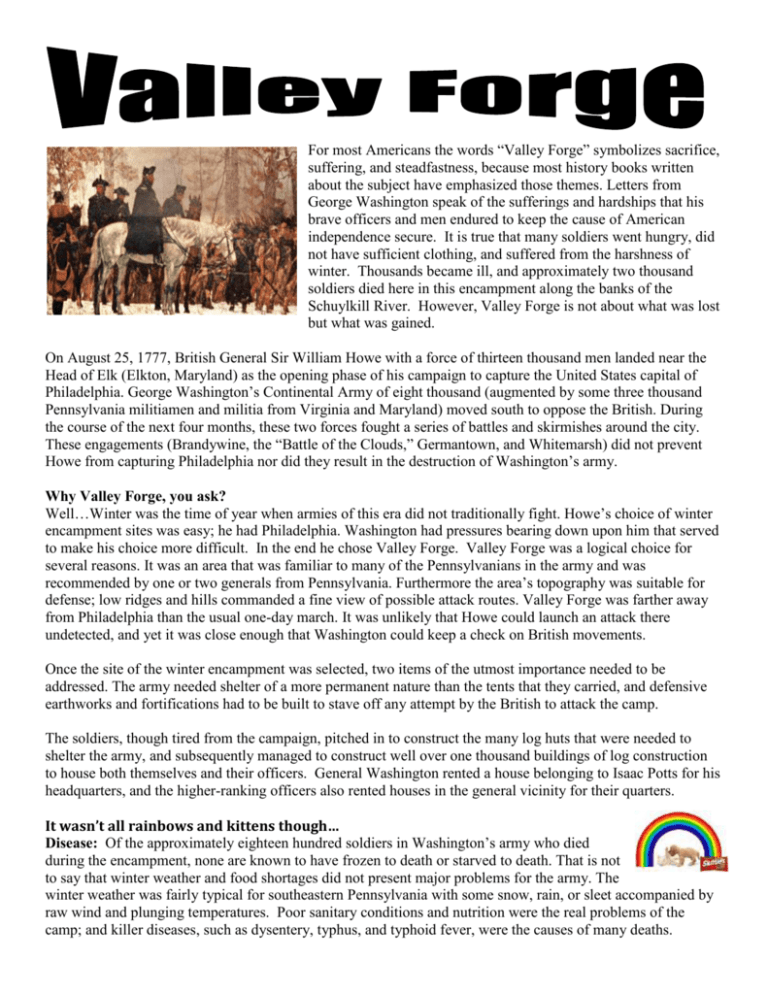
For most Americans the words “Valley Forge” symbolizes sacrifice, suffering, and steadfastness, because most history books written about the subject have emphasized those themes. Letters from George Washington speak of the sufferings and hardships that his brave officers and men endured to keep the cause of American independence secure. It is true that many soldiers went hungry, did not have sufficient clothing, and suffered from the harshness of winter. Thousands became ill, and approximately two thousand soldiers died here in this encampment along the banks of the Schuylkill River. However, Valley Forge is not about what was lost but what was gained. On August 25, 1777, British General Sir William Howe with a force of thirteen thousand men landed near the Head of Elk (Elkton, Maryland) as the opening phase of his campaign to capture the United States capital of Philadelphia. George Washington’s Continental Army of eight thousand (augmented by some three thousand Pennsylvania militiamen and militia from Virginia and Maryland) moved south to oppose the British. During the course of the next four months, these two forces fought a series of battles and skirmishes around the city. These engagements (Brandywine, the “Battle of the Clouds,” Germantown, and Whitemarsh) did not prevent Howe from capturing Philadelphia nor did they result in the destruction of Washington’s army. Why Valley Forge, you ask? Well…Winter was the time of year when armies of this era did not traditionally fight. Howe’s choice of winter encampment sites was easy; he had Philadelphia. Washington had pressures bearing down upon him that served to make his choice more difficult. In the end he chose Valley Forge. Valley Forge was a logical choice for several reasons. It was an area that was familiar to many of the Pennsylvanians in the army and was recommended by one or two generals from Pennsylvania. Furthermore the area’s topography was suitable for defense; low ridges and hills commanded a fine view of possible attack routes. Valley Forge was farther away from Philadelphia than the usual one-day march. It was unlikely that Howe could launch an attack there undetected, and yet it was close enough that Washington could keep a check on British movements. Once the site of the winter encampment was selected, two items of the utmost importance needed to be addressed. The army needed shelter of a more permanent nature than the tents that they carried, and defensive earthworks and fortifications had to be built to stave off any attempt by the British to attack the camp. The soldiers, though tired from the campaign, pitched in to construct the many log huts that were needed to shelter the army, and subsequently managed to construct well over one thousand buildings of log construction to house both themselves and their officers. General Washington rented a house belonging to Isaac Potts for his headquarters, and the higher-ranking officers also rented houses in the general vicinity for their quarters. It wasn’t all rainbows and kittens though… Disease: Of the approximately eighteen hundred soldiers in Washington’s army who died during the encampment, none are known to have frozen to death or starved to death. That is not to say that winter weather and food shortages did not present major problems for the army. The winter weather was fairly typical for southeastern Pennsylvania with some snow, rain, or sleet accompanied by raw wind and plunging temperatures. Poor sanitary conditions and nutrition were the real problems of the camp; and killer diseases, such as dysentery, typhus, and typhoid fever, were the causes of many deaths. Provisions: On a daily basis each man was to receive a ration of a pound of bread, a pound of meat or fish, a quart of beer, a pint of milk, some vegetables (usually beans or peas), and some butter. In December 1777, a meat shortage produced a verbal protest throughout the camp that bordered on mutiny. . The incident waned when meat was issued; however, shortages continued to plague the assembled troops. . The army was forced to send foraging parties throughout nearby localities to induce the civilian population to supply food to the military. Another factor contributing to the food shortages was the road system. . Almost all roads in the vicinity were little more than dirt paths that quickly turned into mud bogs during the winter and spring making transportation by wagon or cart difficult. In addition to food shortages, clothing, blankets, and armaments were desperately needed to refurbish the Army that had been in the field for over two years. Training: One of the major problems facing the Continental Army was the lack of coordinated training. Although most of the men had received some military training, they came from eleven different colonies and were led by men of varying backgrounds and military experience and training. Varying degrees of training meant that not all soldiers understood all of the commands or executed commands in the same way. Needless to say this sometimes produced confusion on the battlefield and a loss of control on the part of the American commanders. So who whipped the Yanks into shape? The arrival at Valley Forge of Baron Friedrich Von Steuben in February 1778 brought immense changes to the Continental Army. Von Steuben earned his military spurs as an officer in the army of Frederick the Great of Prussia and probably held no rank higher than captain in that army. Von Steuben’s first order of business was to train the army and create a unified fighting force. To accomplish this task, he wrote a standardized book of military drill and assisted in the instruction of the men so that all American troops were trained in a similar fashion. Using a model company of one hundred men, these trained soldiers would return to their regiments and continue the training process until the entire army was trained. He also staged large scale military exercises on Valley Forge’s open fields, so that the army could practice coordinated movements of large bodies of men, which was essential to the army’s success in battle during the eighteenth century. Von Steuben also conducted a “school of the soldier” for officers. For the first time, many well meaning, but amateur, officers were given formal training on their duties with regard to the health, training, and discipline of their men. It is from this point forward that the American forces proved that they had mastered the drill and maneuver of the eighteenth century battlefield. As a result of the combination of these strengths, the Continental Army that marched out of Valley Forge on June 19, 1778, was able to take on any other army of the period on practically equal terms. The successes of Monmouth and the later campaigns in the South, culminating in the victory of Yorktown, Virginia, were a testimony to the contribution of the encampment at Valley Forge. Name: _______________________________________________ Please answer the following four questions completely. 1. Why did Washington ultimately choose Valley Forge as the winter encampment for the Continental Army? 2. What kind of Army did Washington have when he entered Valley Forge in 1777? How do you think the problems plaguing the army would have affected the Americans’ chances for success against the British as the war continued? 3. What role did Baron von Steuben play in the eventual victory over Great Britain? 4. Many historians have stated that the name “Valley Forge is synonymous with the American Revolution”. Explain why this statement has been uttered, and do you agree or disagree?
